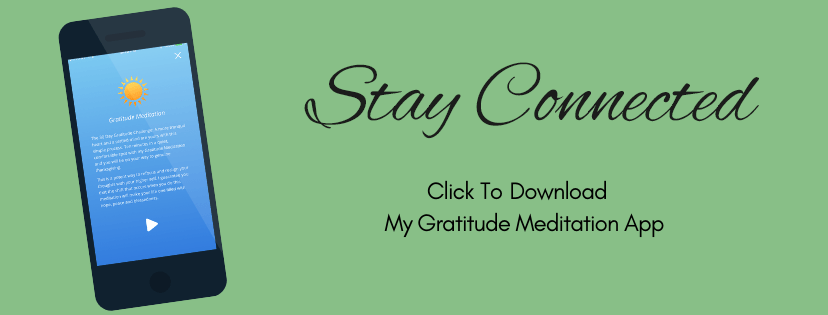The final frontier of aging vibrantly we gerontologists look at is the metaphorical landscape of the heart and the world of our emotions. As I discussed, having a positive attitude will go far toward slowing down, and even reversing the aging clock. If you’re happy in your life, you definitely will be invited to more pot-luck dinners and be more in demand to make up a fourth at bridge.
To add to those enticing ideas, research finds positive attitudes help protect us against all kinds of diseases, or if diseases do find us, having an optimistic approach to life is almost as effective as drugs in helping our bodies heal. Like bananas and chocolate, being grateful, as I discussed earlier, together with a positive attitude, gives our immune systems an extra sweet boost. Look around you. Grateful people look so much younger, too.
The result of looking at the pilsner as more full than empty? A greater sense of contentment, and allowing ourselves to let go of regrets, score as two important values held by the interviewed seniors. These, along with forgiving one’s self and others and maintaining spirituality or the practice of a formal religion fill the glass to overflowing.
The Impact of Spirituality on Aging
There exists a variety of definitions for spirituality, and, for simplicity, I will use the word spirituality to mean both unorganized and organized religion.
Spirituality, as defined by gerontologist/psychologist Dr. Martha R. Crowther at the University of Alabama is characterized as “developing and internalizing [a] personal relation with the sacred or transcendent” — something outside, and bigger, than ourselves — “and promotes the wellness and welfare of self and others.”
The Mayo Clinic Proceedings, reflecting the examination of over 350 studies on physical health and 850 studies on mental health, found this trifecta of behaviors produces better health outcomes. Together with being content and having a willingness to forgive and forget, people whose daily living includes a form of spirituality literally live longer. They have less cardiovascular disease (not so “hard-hearted”), hypertension, and lower blood pressure.
Not only do these folks spend fewer days in acute care hospitalization, they actually clock fewer hospitalizations overall. To pile on even more good news, these seniors exercise more, eat better, smoke less, use their seat belts, and get preventative health screenings. These habits reflect a high level of self-care, which contributes to radiating vibrancy. Also, spiritual seniors show more resilience in dealing with life’s toughest curve balls.
Research confirms these super seniors have higher levels of emotional well-being. Many of them possess a greater sense of purpose for their lives as they get older—another of the chart-topping attributes the seniors mentioned in their interviews. This tenacity remains, even if they experience physical and/or mental decline. Holding on to a sense of purpose as we age often furthers our feelings of altruism.
While perhaps not a direct A to B connection, these overall feelings of self-worth and a need to give back definitely add to aging vibrantly.
Social Connections Increase Vibrancy
The secret sauce to maintaining, or even developing these vibrant-making ingredients? Filling our social diaries/datebooks full of meaningful social interactions and connections.
Dan Buettner, the author of The Blue Zones: Nine Lessons For Living Longer, arguably the first book to explore the secrets of long-living cultures around the world and in our own patch of heaven, says this:
Those with the most social connectedness lived longer. Higher social connectedness led to greater longevity. Those with the least social connectedness were between two and three times more likely to die during a nine-year period than those with the most social connectedness.
Dan Buettner
Family has long been thought to be the key to a long and happy life. Newer studies are turning that assumption on its ear. Michigan State University’s Dr. William Chopik looked at 270,000 people in nearly 100 countries and discovered, “[While] in a lot of ways, relationships with friends had a similar effect as those with family, in others they surpassed them.”
Wow, now for some of us that is new news! As I dug into this idea, I found even more evidence that social connections and interactions outside of the family have life-extending and life-enhancing benefits.
Another large study of 6,000+ people found seniors who participated in several different types of social groups had the least amount of cognitive decline. Tied to this was one’s attitude toward aging. Interestingly, for women, participation in groups, such as volunteering, knitting circles or pottery making, significantly enhances memory function, and increases mental stimulation and strategic thinking. Taking part in group activities also develops greater synaptic density (the better to think and remember things) and enhances neural growth—the lengthening of our telomeres!
Activity Keeps us Vibrant
Since stimulating activity raises a person’s sense of well-being, these women also had positive attitudes toward their own aging. These two facets reinforce each other in a wonderful win-win. Additionally, women who participate in cultural and intellectually challenging activities have a lower risk of contracting Alzheimer’s.
In men, it seems, things work a little differently. For them, participation in neighborhood associations and local event groups protects against cognitive decline, but the achievement of social status through social participation keeps men more mentally fit. Feeling they have a greater purpose in life helps protect men against developing Alzheimer’s.
Last, but certainly not to be overlooked, having sex and maintaining intimacy as we age will definitely contribute to keeping us vibrant!
In these past weeks I have highlighted information and tips from the latest research to help us live the second half of our lives as vibrantly as we have lived the first. There are things I haven’t yet covered and will save for another day: diet, supplements, sleep, and more. For a complete list of ideas covered over the last month, please refer to my Vibrant Aging™ List and copy or print it. You can the tape this list to the fridge or the bathroom mirror (my preferred spot), or slip it under the stack of books on your nightstand to refer to, or think about, as you continue your journey of aging vibrantly.
Until next time… Be Vibrant!




